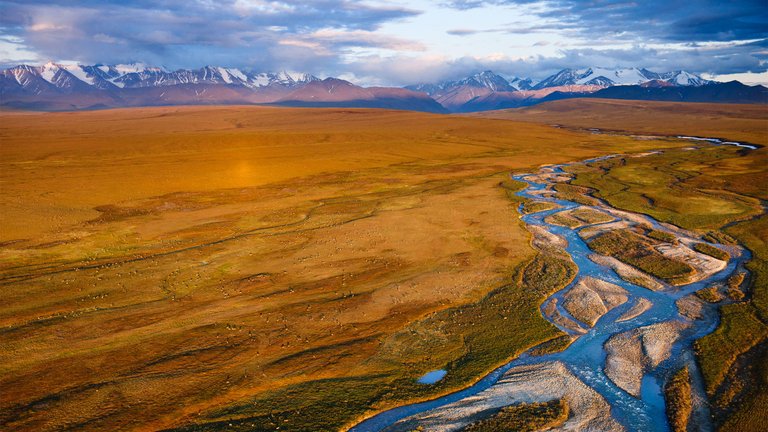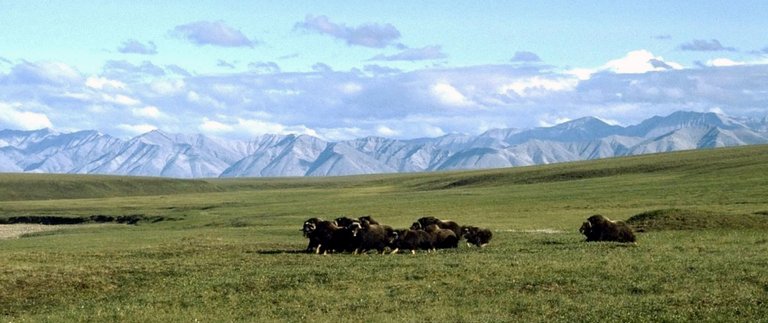Ever since the rise of modernization of the human species (specifically since the mid to late 1800s and the invention of the steam engine), our presence on the planet has had far reaching effects and implications than we have ever been able to imagine. Today, there is hardly any place left on the planet that remains untouched and unscathed by the heavy footprint of the human civilization.

Now, the 19.6 million acre Arctic National Wildlife Refuge (ANWR) is in the line of direct fire by the hungry oil industry and the shortsightedness of US Congress.
ANWR is a vast stretch of primordial wilderness, stretching from the Spruce Forests in the South, to the Brooks range, onto the sloping wetlands that flow into the icy cold Beaufort Sea. The Refuge is the breeding ground of over 200,000 Caribou, the winter habitat of Polar Bears, and the place where millions and millions of migratory birds gather, after having flown in all the way from many parts of North America.

But if the Republican Tax Reform bill is passed, all of that would be replaced by oil wells, gravel roads, airfields, oil camps and the infrastructure they invariably entail. And should they become sufficiently large enough (which they will, considering mankind’s enormous need for oil and the money-hungry oil companies and economies) very soon, the ANWR will be under serious threat.
When the bill is passed, it would open ANWR’s long contested coastal plain to oil rigs.
According to estimates by the US Geological Survey, the estimate is that the area holds between 4.3 billion to 11.8 billion barrels of technically recoverable oil. If the number 11.8 billion is indeed true, then ANWR would be put on par with Prudhoe Bay, one of the largest oil discoveries in North America.

The past…
Ever since ANWR was created in 1980, the fight for drilling has been going on. With oil money gushing into the states since the Trans-Alaska pipeline started carrying oil from Prudhoe Bay to Valdez, many Alaskan republicans have tried to open up ANWR to drilling and failed. The 19.6 million acre refuge has been largely protected for the last 35 years with no development allowed.
But with the American Congress having refused to take action over the ultimate fate of ANWR and always leaving it for future congresses to decide, ANWR has been the hotbed for one of the longest running environmental controversies in Modern American History.
The Present...
Alaska has 80% of its budget coming from oil and gas taxes and royalties. Most government jobs, schools, health clinics and infrastructure have been largely funded by property taxes on oil industry. Hence, it is not surprising that most – but not all – of the 10,000 residents favor opening ANWR to drilling.
The Arctic Slope Regional Corporation says “A clear majority of the people of the North slope support responsible development in ANWR; they should have the same rights to economic self-determination as people of the United States.”
But as we know, responsible development when it comes to oil is a far-fetched idea.
Stay tuned for more on the Arctic Refuge’s Oil Drilling crisis. In our next instalment, we will look at what the story looks like for ANWR’s oil plan.

Image sources:
Disclaimer: All photos are properties of their respective owners. The images are used to provide a visual to the story and no infringement is intended. Text is the author's own, based on research on the internet and books.
Join the discussion! Let me know your thoughts and opinions on this article in the comments below!

Hi! I am a robot. I just upvoted you! I found similar content that readers might be interested in:
https://news.nationalgeographic.com/2017/12/arctic-wildlife-refuge-tax-bill-oil-drilling-environment/
The article is written based on information put together from these sources - Nat Geo article/Wikipedia/USGS data/The Guardian